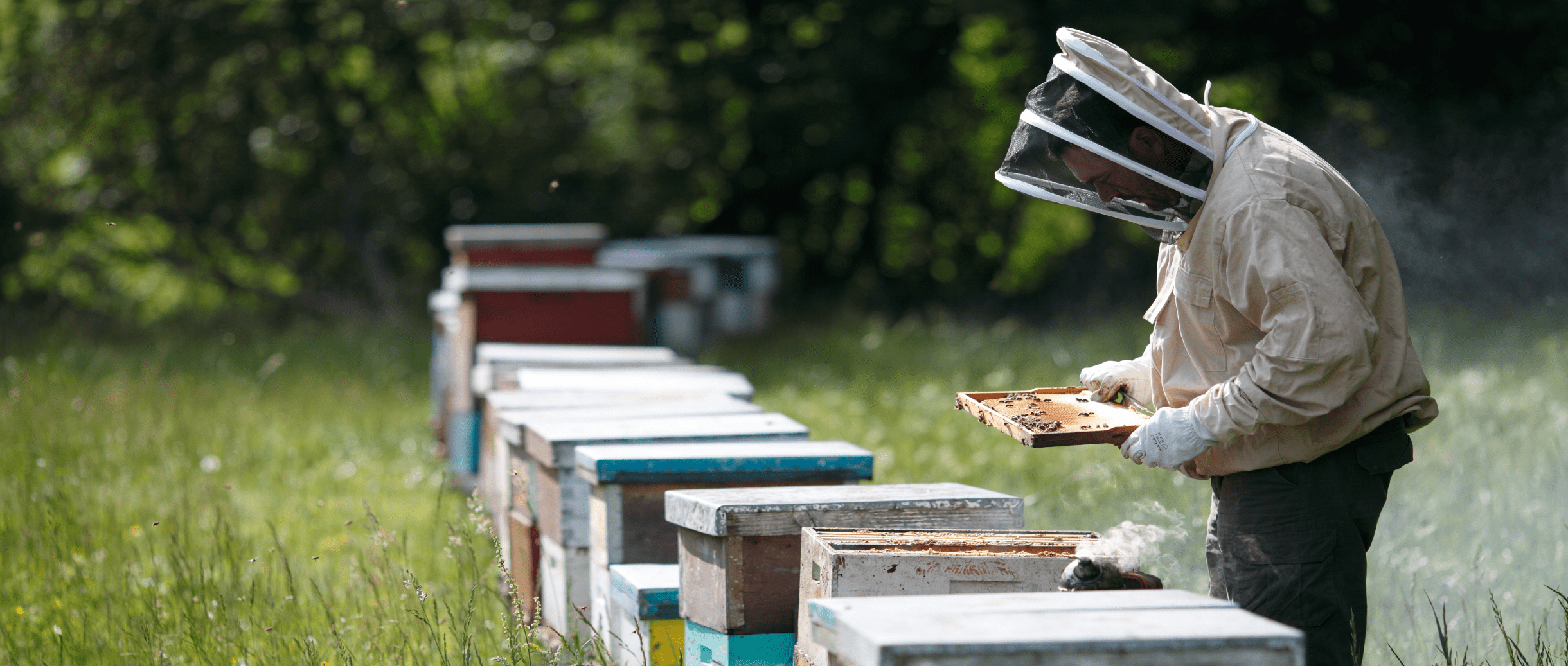

Blog

Journalist and photographer, I was born in Alella, but whenever I can I escape to the Pyrenees and Empordà.
When your professional project is named after the place where you live, it is clear that this region is very important in your life and that one of your goals will almost certainly be its preservation and conservation.
That’s the case of Abellaires Empordanesos, which started forty years ago and still has the same spirit it did back then. A new generation at the helm has not stopped the love for this region and dedication to the local environment from remaining a constant in the company’s work. The shop this small family business runs in Garriguella is a doorway into its world. Seeing the shelves full of jars and pots, the thousand varieties that are made from what they collect and the tools needed to handle the honey helps you to understand all the work that goes into producing it. We are greeted immediately by Marc Arumí, who took over the project a little over ten years ago now. “I got into this business by accident. I was a lorry driver in Cardedeu, but work began to dry up and I started to help my father-in-law with the vineyard and the bees. I didn’t particularly like the vineyard”, he recalls, “but I loved working with the bees”.

Santa Pau. Jordi Roca. Arxiu Imatges PTCBG
And for this beekeeper from Valls now living in the Empordà region, “the way bees work is exciting: it’s a miracle that in just two months they make honey”. Although he doesn’t say so, watching him approach the bees and explain their dynamics we can see that he has a profound connection with them. “Look! They’re happy today!”, he says. When we ask him how he knows that, he explains. “After spending a few years with them, you learn to recognise their mood. On a clear day, with pleasant temperatures, you can approach them, but when it’s windy they are more agitated. The tramuntana wind affects them!”.
Marc knows this well as many of his bees live in windy areas. He has apiariesin around twenty places, such as Cap de Creus, the Albera Massif, Les Salines close to Maçanet de Cabrenys and Les Dunes in Torroella de Montgrí, and he combines conventional production with organic methods. All the different hive locations have something in common: flowers. Marc searches for the best spots according to the flowers that grow there, and that’s why he is able to make so many different honeys: thyme, rosemary, chestnut, heather, strawberry tree, eucalyptus, acacia and many more. He also likes to blend them and create multiflower honeys.

Maria Geli i Pilar Planagumà. Arxiu Imatges PTCBG
The locations of the hives, however, are not the only thing that adapts to the needs of the bees. The work of Marc and his team does too. “A beekeeper’s daily work in January is nothing like that carried out in April or July. In winter the bees rest and we prepare the material for spring. When it starts to get warmer, the show begins as these insects become more active, lay eggs and the honeycombs grow. It wipes away all the bad memories of when you collected boxes full of dead bees”.
In recent years there have been a series of “evils”, as he calls them, threatening beekeeping. “Climate change is affecting everything. In the past, it was cold from November to February, the bees produced their honey in the spring and returned later, in the autumn, with the late flowers. Now, however, we have dramatically shorter springs and autumns and the summer heat drags on into almost December. We have lost the second harvest in the autumn”. Some experts predict that if these unseasonably high temperatures continue, there is a real risk that beekeeping will not survive. And if the bees disappear, there will be no pollination, the production of fruit and vegetables will decrease, and food will become more expensive.

Santa Pau. Jordi Roca. Arxiu Imatges PTCBG
It’s a rather bleak future, which makes us aware of the need to respect our environment, make the most of what we have and take care of the smallest producers who work constantly and efficiently, like bees. The outstanding work of Abellaires Empordanesos is an excellent example which has also been awarded the Girona Excel·lent quality seal for its thousand-flower honey, small-harvest heather honey and organic honey from the Cap de Creus Natural Park. Come and visit its shop in the Empordà region, taste the products and perhaps be surprised by the different sweetness of each variety.

Santa Pau. Jordi Roca. Arxiu Imatges PTCBG